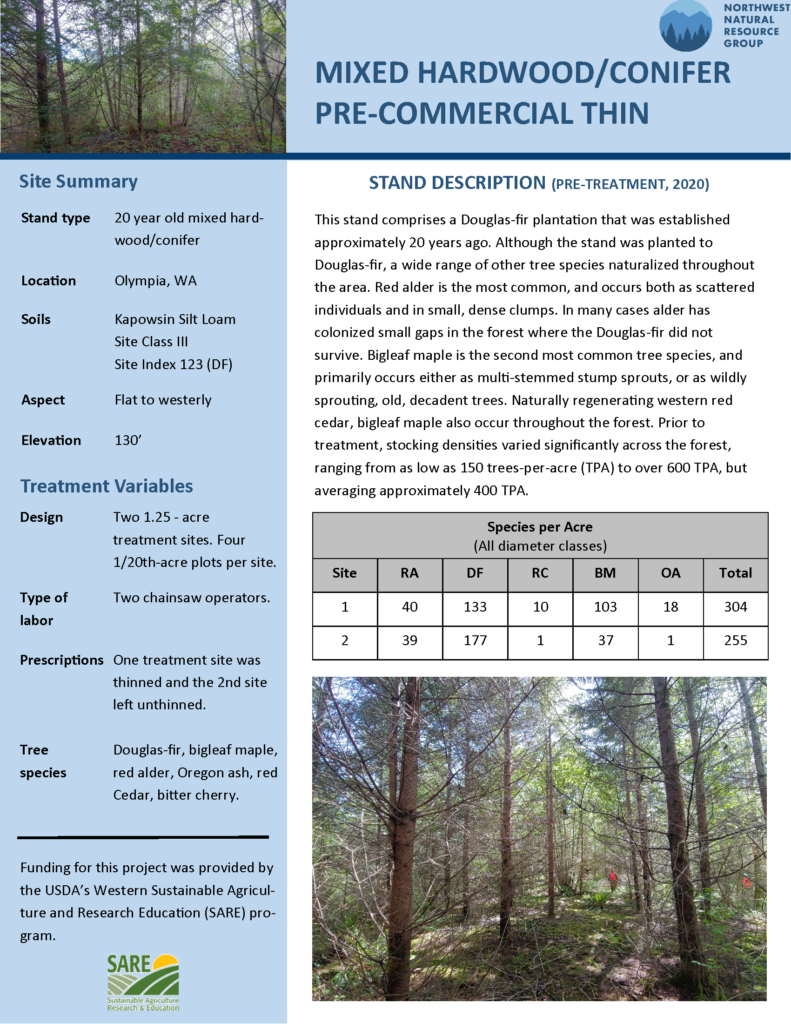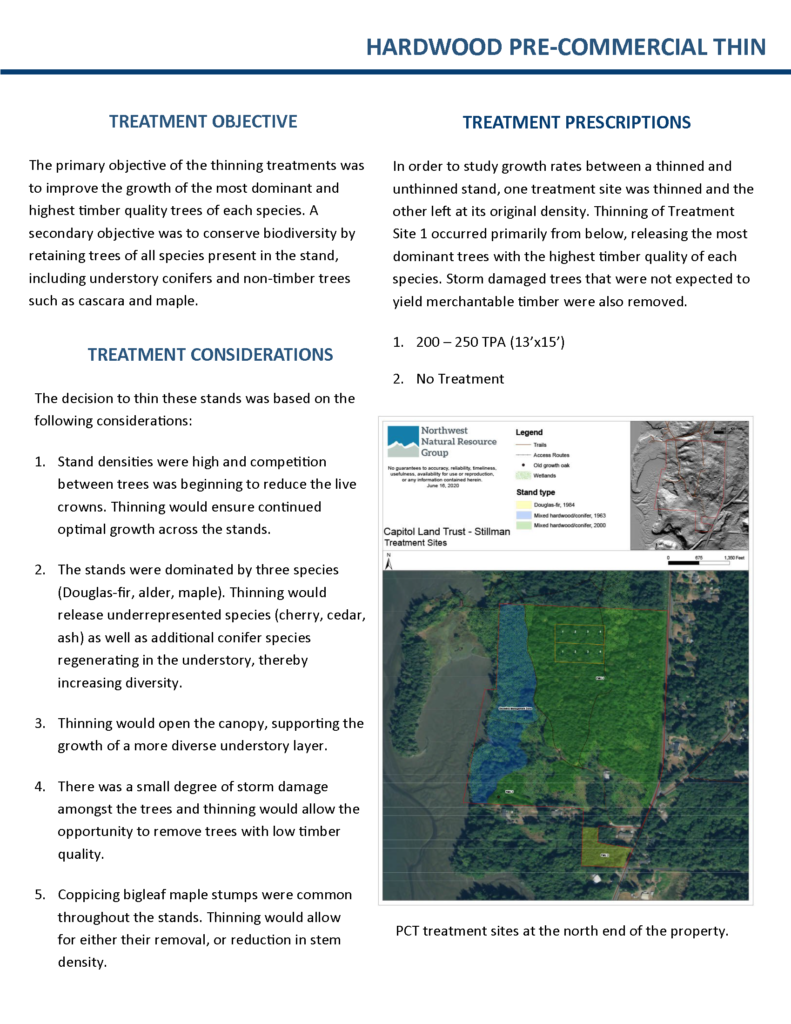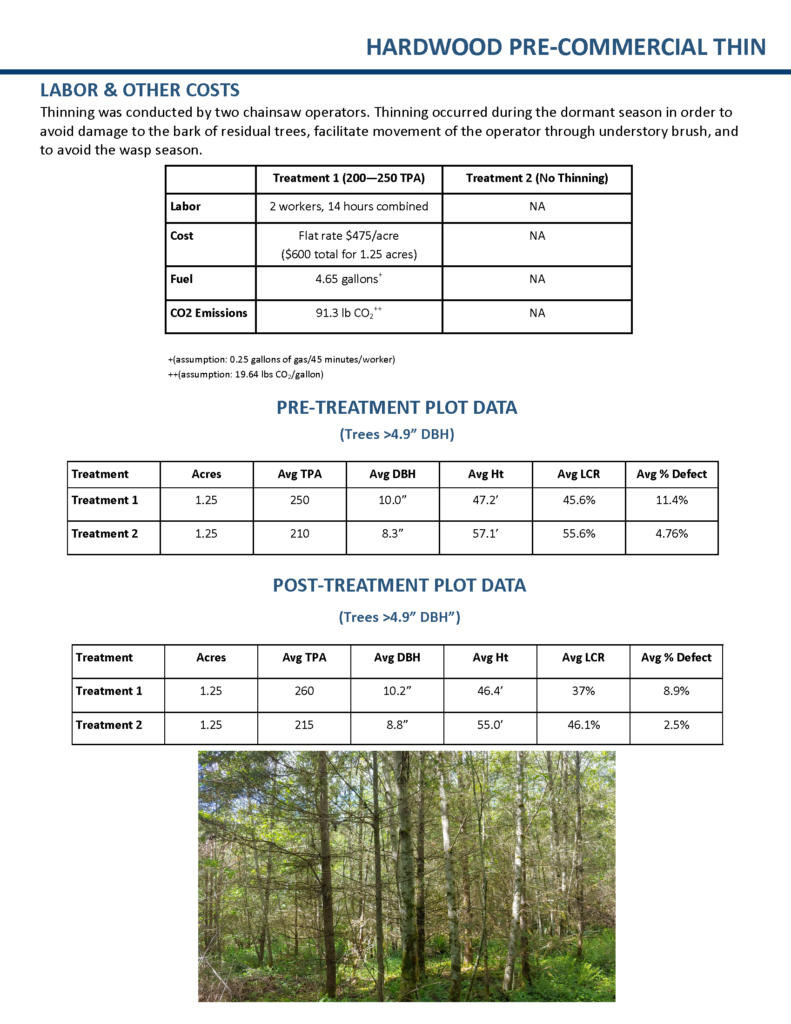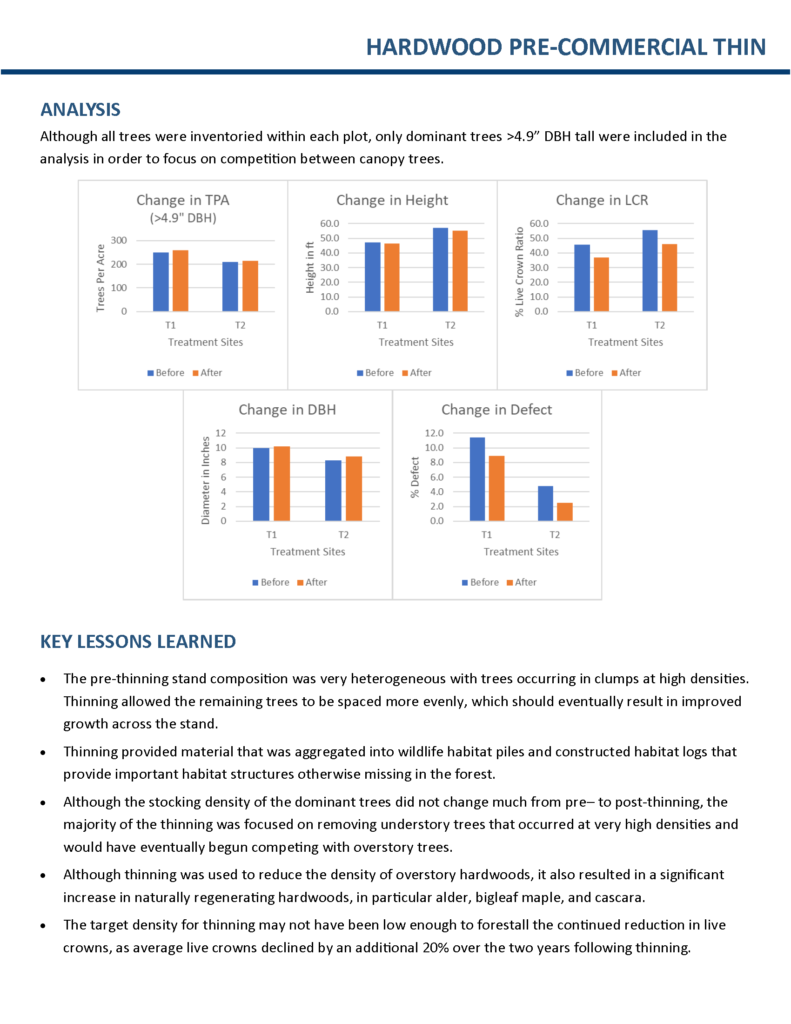CAPITOL LAND TRUST
Increasing forest health through young-stand thinning & seedling release
The Capitol Land Trust (CLT) owns a 52-acre forested property along the eastern shoreline of Hendersen Inlet north of Olympia, WA. The property was purchased by CLT from the Stillman Tree Farm in 2016 in order to conserve ecologically significant shorelines and upland woodland habitat and demonstrate ecologically-based forest management practices. The Stillman property hosts several forest types, including a shoreline zone along Hendersen Inlet that contains a mix of ages and species of hardwoods and conifers, a small plantation of 35 year old Douglas-fir, and a 20 year old plantation of Douglas-fir that comprises the majority of the property. The fir plantations were established following clearcutting of the prior forest by the previous landowner, and since that time, numerous hardwood and conifer species have naturally regenerated throughout, in particular, the 20 year old fir plantation. One management challenge facing CLT is overstocking and increasing competition between trees in the 20 year old stand. Red alder and big leaf maple have colonized many areas of the stand and are directly competing with the planted fir.
YOUNG MIXED HARDWOOD/CONIFER STAND PRE-COMMERCIAL THINNING (PCT)
Below is a summary of the case study. Click here for a PDF version of the case study.




